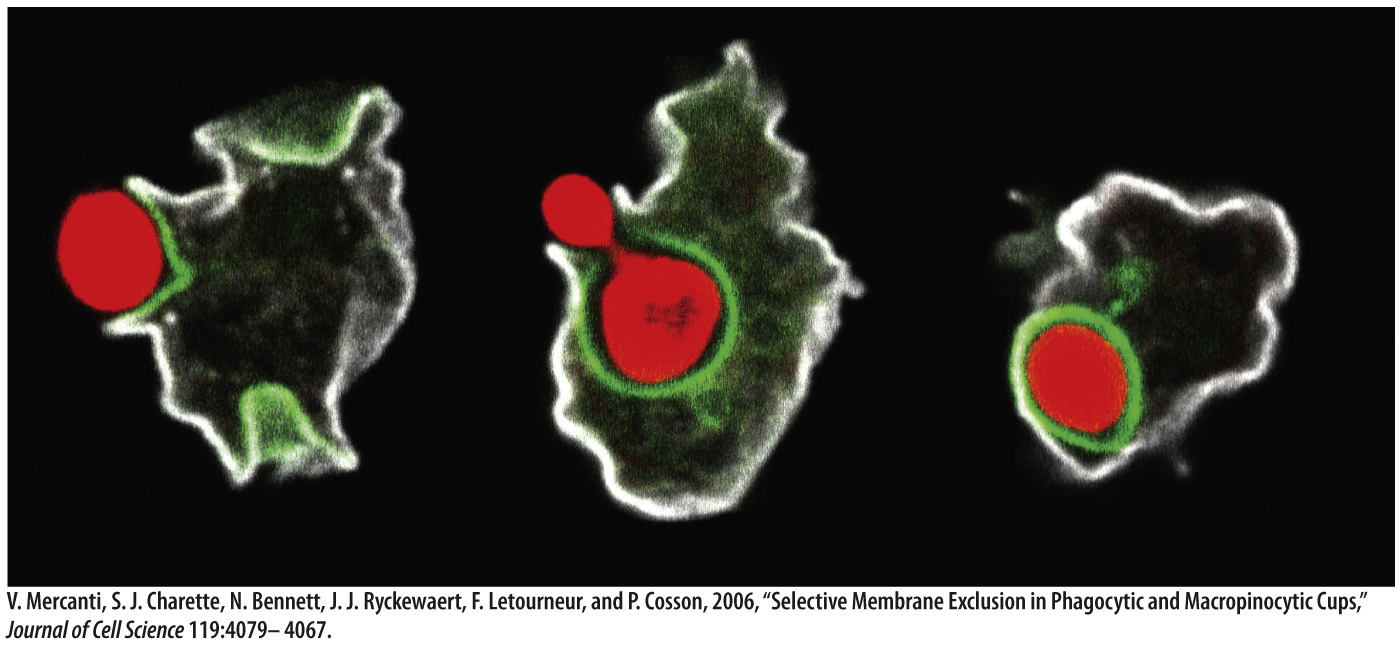Internal protein scaffolding and dynamic membranes organize the eukaryotic cell.
All cells require a mechanism to maintain spatial order in the cytoplasm. As we saw in Chapter 26, bacteria and archaeons rely primarily on walls that support the cell from the outside, along with a framework of proteins within the cytoplasm. Eukaryotes also use an internal scaffolding of proteins to organize the cell, mostly microtubules composed of the protein tubulin and microfilaments of actin. This cytoskeleton, found in all eukaryotic cells, differs in one key property from the rigid protein framework of bacteria: It can be remodeled quickly, enabling cells to change shape (Chapter 10).
Dynamic cytoskeletons require dynamic membranes that enable the cell to continue functioning even as it changes shape; eukaryotes maintain within their cells a remarkably dynamic network of membranes called the endomembrane system (Chapter 5). This network includes the nuclear envelope, an assembly of membranes that runs through the cytoplasm called the endoplasmic reticulum (ER) and Golgi apparatus, and a plasma membrane that surrounds the cytoplasm. All membranes of the endomembrane system are interconnected, either directly or by the movement of vesicles. Many are also capable of changing shape rapidly. In fact, the different membranes are interchangeable in the sense that material originally added to the endoplasmic reticulum may in time be transferred to the cell membrane or nuclear membrane. Biologists like to say that the membranes of eukaryotic cells are in dynamic continuity. Membranes are stable, as required for energy metabolism, only in the mitochondria and chloroplasts.
In combination, the dynamic cytoskeleton and membrane system provide eukaryotes with new possibilities for movement. For example, amoebas extend finger-
555

Intracellular vesicles and the molecules they carry are transported through the cytoplasm by means of molecular motors associated with the cytoskeleton (Chapter 10). In this way, both nutrients and signaling molecules move through the cell at speeds much greater than diffusion allows. A major consequence is that eukaryotic cells can be much larger than most bacteria.
The cytoskeleton and membrane system are flexible in another way: A change in the expression of a few genes can change their shape and organization. This makes possible yet another hallmark of eukaryotic evolution—